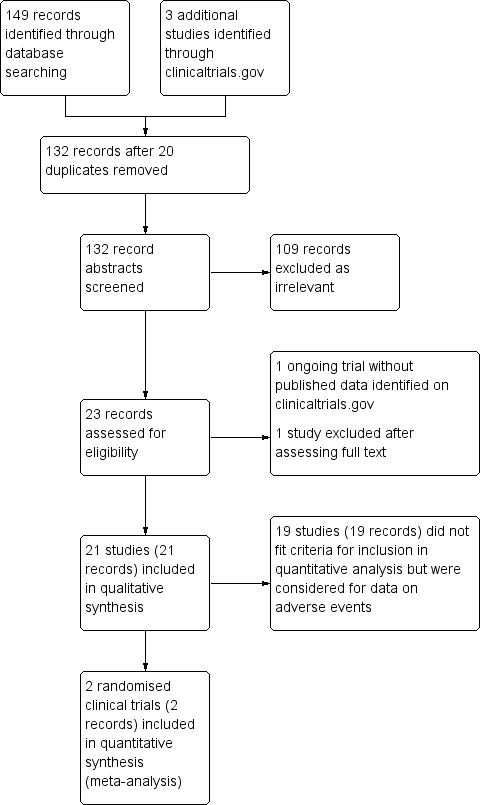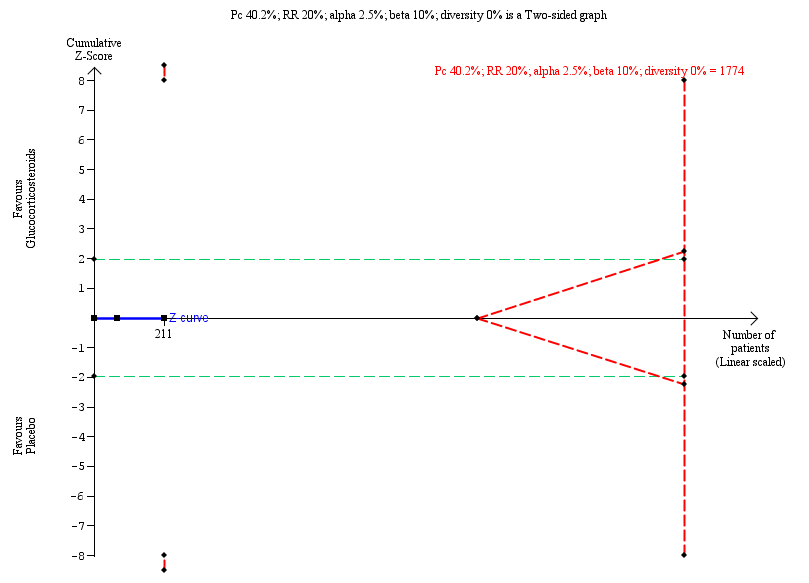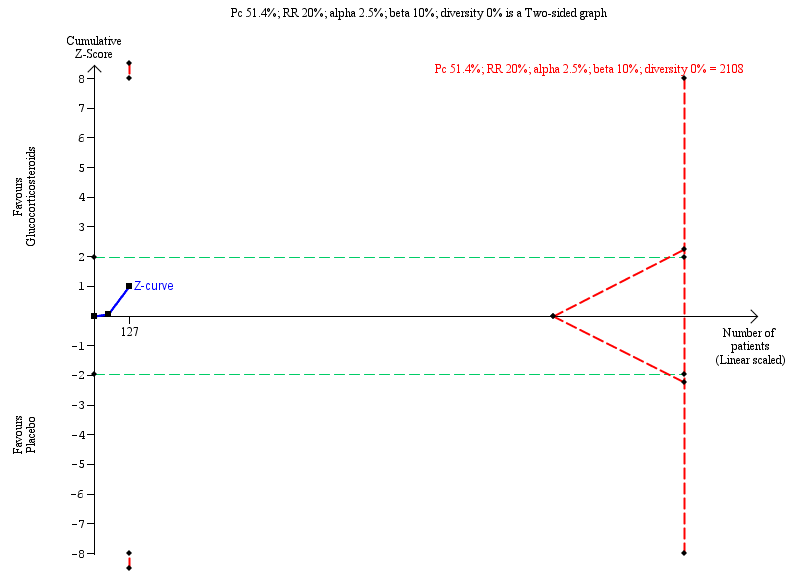| Glucocorticosteroids for infants with biliary atresia following Kasai portoenterostomy |
| Patient or population: infants with biliary atresia Settings: hospitals Intervention: glucocorticosteroids Comparison: placebo |
| All‐cause mortality six months after Kasai portoenterostomy | 19 per 1000 | 19 per 1000
(3 to 131) | 1.00 (0.14 to 6.90) | 104 placebo 107 treatment
(2 RCTs, Bezerra 2014; Davenport 2007) | ⊕⊕⊝⊝
low1 | |
| Serious adverse event, two years follow‐up | 800 per 1000 | 814 per 1000
(708 to 977) | 1.02 (0.87 to 1.20) | 70 placebo 70 treatment
(1 RCT, Bezerra 2014) | ⊕⊕⊝⊝
low2 | A significantly higher proportion of the treatment group had their first serious adverse event in the first 30 days after their Kasai portoenterostomy. |
| Health‐related quality of life | | | | | | There are no data for this outcome in the included trials. |
| Infants who did not clear jaundice at six months | 514 per 1000 | 452 per 1000
(303 to 529) | 0.89 (0.67 to 1.17) | 107 placebo 104 treatment
(2 RCTs, Bezerra 2014; Davenport 2007) | ⊕⊕⊝⊝
low1 | The required information size for significance for the Trial Sequential Analysis was 540. The number of infants included in this meta‐analysis was 211, corresponding to 39.1% of the required information size. |
| All‐cause mortality or liver transplantation at two years | 402 per 1000 | 404 per 1000
(291 to 562) | 1.00 (0.72 to 1.39) | 107 placebo 104 treatment
(2 RCTs, Bezerra 2014; Davenport 2007) | ⊕⊕⊝⊝
low1 | The required information size for significance for the Trial Sequential Analysis was 1774. The number of infants included in this meta‐analysis was 211, corresponding to 11.9% of the required information size. |
| Subgroup analysis of infants operated on at less than 70 days of age who did not clear their jaundice by six months after Kasai portoenterostomy | 516 per 1000 | 381 per 1000
(210 to 423) | 0.75 (0.55 to 1.11) | 64 placebo 63 treatment
(2 RCTs, Bezerra 2014; Davenport 2007) | ⊕⊕⊝⊝
low1 | The required information size for significance for the Trial Sequential Analysis was 538. The number of infants included in this meta‐analysis was 127, corresponding to 23.6% of the required information size. |
| *The basis for the assumed risk (e.g. the median control group risk across studies) is provided in footnotes. The corresponding risk (and its 95% confidence interval) is based on the assumed risk in the comparison group and the relative effect of the intervention (and its 95% CI).
CI: confidence interval. RCT: randomised clinical trial. |
| GRADE Working Group grades of evidence -
High certainty: this research provides a very good indication of the likely effect; the likelihood that the effect will be substantially different is low. -
Moderate certainty: this research provides a good indication of the likely effect; the likelihood that the effect will be substantially different is moderate. -
Low certainty: this research provides some indication of the likely effect; however, the likelihood that it will be substantially different is high. -
Very low certainty: this research does not provide a reliable indication of the likely effect; the likelihood that the effect will be substantially different is very high. |













